Posted by sdreyerleon in Uncategorized July 6, 2011
Educating for Sustainability: A Mindfulness Practice!
A colleague recently suggested I watch a Youtube video of Ram Dass interviewing Thich Nhat Hanh. Both men have made substantial contributions to the American understanding of mindfulness over the past four decades. It’s a delicious little slice of insight between two beautiful minds. During the interview, Thich Nhat Hanh says something that cuts to the heart of what I see as the relationship between mindfulness and sustainability. He says, “It’s easy to get people to agree that things are impermanent. They may understand it completely, but they act as if things are permanent.”
In order to experience, truly experience the changing world around and within ourselves, we must cultivate the capacity to know, to intimately see and experience, impermanence and how we relate to the fact of it. For example, we here in New England know the seasons change. Do you have a favorite season? Are you acquainted with how you relate to its impending arrival? Do you savor each day greedily, be it warm summer swims or frosty ski runs? Do you mourn the passing of this season with longing, melancholy or outright sadness? Do you find yourself complaining to yourself or others when the expected weather conditions do not materialize. We KNOW that seasons come and go, that weather patterns change and yet, we plan and organize and react to these changes with grasping and resistance. And, we suffer for it in ways large and small. What would it mean to live our knowing of this impermanence and acting based upon it, unhooked from the cycle of desire, longing, and aversion? Would we love our “favorite” season less, or would we be more contented with the ever-changing flow of the natural world around us? I challenge each of us to experiment with this simple idea and see where it takes you.
It puts me in mind of the reasons why I believe so strongly in the development of the field of Educating for Sustainability. The need for the conscious development of a culture of sustainability is rooted in our default tendency to take as permanent our current conditions. As a species and as individuals, we do not act as if the health of the earth is urgently essential for our survival. We do not treat our planet as if every single thing we need to stay alive and every single thing we possess arises from it and it alone. But this is the case. Educating for Sustainability is rooted in the idea that we have to increase the capacity of individuals and groups of people to act in ways that will ensure survival for ourselves and the ecosystems on which we depend. It’s not enough to understand that our lifestyles are unsustainable, we have to do something about it.
In addition, those of us who live in this affluent, abundant culture of plenty, must understand that our situation is intimately connected to lives of others whose basic human needs are not met. We know this intellectually, but we do not act based on that knowledge. Or maybe more accurately, we do not change our activities based on that knowledge. And yet, we must know on some level, like the changing of the seasons, it’s only a matter of time until the affects of global resource degradation confront us at our own door step. Higher prices for food and fuel, being perhaps just the first small symptoms of much larger changes to come.
So, in developing our mindfulness practices, are we also developing our capacity to take on the challenges of creating a sustainable present and future? I hope that this post will be the first in a series of explorations of the link between mindfulness and Educating for Sustainability. Please add your thoughts and comments. We would also be very interested to know about work happening in the intersection of the fields of Mindfulness and Educating for Sustainability, so please feel free to send links and Thich Nhat Hanh, please follow this link!
http://www.youtube.com/watch?v=tZKrl5n79hY
Source: http://mindfulnessineducation.wordpress.com/2011/07/06/educating-for-sustainability-a-mindfulness-practice/

Working to create a sustainable world hasn’t been easy. One reason for this is that people are highly capable of knowing something but acting as if they didn’t. It is epitomized by the attitude, “I know I should, but I don’t.” We know we should eat local, bike more, etc. etc., but so few of us actually live up to what we know.
In Buddhism, there is a huge emphasis on the different between knowing something intellectually and having the kind of understanding that leads to insight and transformation. Once we have that insight, we are changed by it and there is no going back.
So if we in the sustainability movement want to create this deeper type of understanding, we can see mere education won’t be enough. Instead, we can combine education about these issues with the practice of mindfulness that helps turn “mere ideas” into deep insight.
Jon Kabat-Zinn, professor of medicine at the University of Massachusetts, describes mindfulness as “purposeful awareness.” A more traditional definition would be that practicing mindfulness means that we are strengthening our ability to focus attention while remaining relaxed and letting go of our attachments to ideas. When we develop this capacity, we can more easily let go of strongly held opinion in order to be open to new information.
So how does one develop the kind of mindfulness that helps us let go of entrenched ideas? We start with basic mindfulness building exercises like “full awareness of breathing” and build toward exercises that help us see our deep interconnection with all beings and the planet.
Here are some instruction for “full awareness of breathing.” You can try this yourself:
-
Stop whatever you are doing and assume a comfortable position.
-
Bring all of your attention to the sensation of your breathing. It can be at your nose, chest, abdomen or your entire body.
-
Allow yourself to really enjoy the sensation of breathing. It can be truly pleasant to be able to breathe freely. Give yourself permission to enjoy that pleasant sensation as breath moves in and out.
-
When you realize that your mind has wandered, very gently and with no self-criticism, bring your attention back to your breath. It is entirely natural that your mind will wander because it has a lot of momentum from moving so fast. By bringing your attention back to your breath, you are letting it slow down naturally without trying to force it.
Just a few minutes of practicing mindfulness of breathing can help refresh our minds and create a sense of openness. As we develop this ability, we can use the same concentrated yet relaxed attention to contemplate interconnection and the consequences of our actions.
Tim Ambrose Desmond is a therapist and consultant. His website is www.phonecounseling.net
image: premasagar (photopin cc)
http://www.themindfulword.org/2012/sustainability-mindfulness/
Could Mindfulness hold the key to unlock a sustainable future?
In the fifth and final part in the Sustainable Business Strategy series, Mike Townsend explores how mindfulness might help us unlock the transformation within ourselves - and in our businesses.
PART 5: GRACE UNDER PRESSURE?
"As human beings, our greatness lies not so much in being able to remake the world – that is the myth of the atomic age – as in being able to remake ourselves.” Mahatma Gandhi
The further we progress on our journey towards sustainable business, the more fundamental are the constraints and challenges that we encounter. We may improve compliance, and optimize our eco-efficiency initiatives, but then find we need to address our business models, our organizational and ownership formats, if we are to deliver more impact, more benefits.
We may go further still, and explore the need for systemic change, to drive the right behaviours and performance, that will enable our strategies to flourish.
But there is one constant, one common denominator in all these processes, organisations, and systems – people.
And so, we reach the ultimate barrier – ourselves – where the only way forward is to go within, and change our internal world. Only then can we move forward to drive the changes that are truly necessary.
Could it be, that for us to unlock transformational change in business, we must first undergo individual transformation? Could mindfulness help us overcome our deepest fears, as we wrestle with the deep and fundamental changes required, if we are to truly transform to a sustainable future?
An awakening?
Mindfulness has its roots in the Buddhist approach to increasing awareness of oneself and one’s surroundings.
As Thich Nhat Hanh describes in his excellent and very accessible book The World We Have, mindfulness is at the heart of awakening, of enlightenment, and is achieved through the practice of breathing and meditation; to be here, in the present moment, so we can recognise what is happening around us, and make conscious choices, so we can act in sustainable ways.
 Thich Nhat Hanh describes mindfulness is being at the heart of awakening, of enlightenment, and is achieved through the practice of breathing and meditation
Thich Nhat Hanh describes mindfulness is being at the heart of awakening, of enlightenment, and is achieved through the practice of breathing and meditation
So, how does it work? On one level, mindfulness can sound deceptively simple; practitioners sit in a comfortable position, close their eyes, and note the physical sensations in their bodies and the flow of thoughts through their minds – they become aware, and in the moment – the aim is to observe these sensations, but in a non-judgemental way, without reacting to them. In time, this allows one to quieten the mind, which should lead to a calmer, clearer, and more focused state.
Although for some, this might sound like a bit too hippy-dippy, according to Professor Mark Williams, the science is now catching up – demonstrating repeatable and spectacular results. Mindfulness can improve wellbeing, and reduce the risk of depression by half.
Interestingly, the concept of mindfulness appears to be making inroads into the business world, and is almost, dare I say, becoming fashionable.
In a business context, according to Karl Weick at the University of Michigan’s Ross School of Business, “mindful organisations are better able to manage the unexpected in a challenging, highly competitive environment”. This certainly sounds like a good idea, given the massively turbulent times we find ourselves in.
Into the mainstream
There are certainly some big corporate names that appear to think so, including AOL, Apple, General Mills, Huffington Post, Google, Nike, and Procter & Gamble.
Even Steve Jobs, Apple’s founder and former CEO, was a Zen Buddhist; and he spoke openly about how his time meditating in India shaped his worldview, and ultimately, Apple’s product design.
In her recent interview with Google's Rich Fernandez, Dr Bronwen Rees explores the link between the leadership agenda and wellbeing, mindfulness, and wisdom at Google. For Fernandez, what started out as a personal pursuit developed into something much greater. Mindfulness grew to represent a cultural shift within, and across organisations.
Fernandez started running a few sessions on mindfulness, expecting around 20 to 30 people to show, but 200 turned up. Clearly, he had tapped into something on a deeper level; perhaps a latent need to find a better way?
The team at Google then developed a robust set of mindfulness and wisdom practices and courses, including Mindfulness Based on Emotional Intelligence – a seven-week course, meeting once each week, and which includes a full day at a meditation retreat. Another course focused on Mindfulness-based Stress Reduction.
And some courses were designed by, and with specific business units in mind, such as The Software Engineering of the Mind. The mind boggles at the prospect of that one.
Google has also established Wellness Centres, where people can go for yoga, massage, or meditation. These sessions are now very popular, with long waiting lists. They also run a video-conferencing meditation group, they call “meditation hangouts”.
The approach has become increasingly popular, and over 4,000 of Google’s 35,000 employees have now taken some form of mindfulness, wisdom, or wellbeing programme.
But this is not just about wellbeing for its own sake.
Google is a high performance culture; expectations are high and this requires a robust performance management system. For Google, mindfulness was all about achieving peak performance and optimising productivity through more mindful practices.
“People at Google aspire to do world-changing things. So wisdom and mindfulness provide some strategies and tools that equip us to be able to sustain that level of performance.” Rich Fernandez, Senior People Development Lead, Google
Business schools are also starting to embrace the practice, including the Peter F. Drucker and Masatoshi Ito Graduate School of Management in California.
In a series of four seven-week executive education classes, and a separate course for MBA students, Jeremy Hunter teaches what he calls self-management, “managing your insides so you can deal with your outsides better”. Classes start with a brief meditation, and cover topics like managing emotional reactions, and dealing with change.
Harvard Business School has also take the leap, where courses are run to help business people better understand their emotions, which involves opening up, to share with others their toughest personal experiences.
 "People at Google aspire to do world-changing things - so wisdom and mindfulness provide some strategies and tools that equip us."
"People at Google aspire to do world-changing things - so wisdom and mindfulness provide some strategies and tools that equip us."
There’s something in it – but is it possible to quantify tangible benefits?
Big numbers
According to business professors Michael Porter, Elizabeth Teisberg, and Scott Wallace, investing in wellbeing just makes good financial sense. Their studies show that US employers pay 200-300% more for the indirect costs of health care – in the form of absenteeism, sick days, and lower productivity – than they do on actual health care payments. Their recommendation is for companies to "mount an aggressive approach to wellness, prevention, screening and active management of chronic conditions."
And then there is the relationship between happiness and productivity. The iOpener Institute carried out a study of a company with 1,000 employees; they found that increasing happiness in the workplace reduces the cost of employee turnover by 46%, the cost of sick leave by 19%, and increases performance and productivity by 12%.
On the face of it, these are very significant benefits – for businesses as well as individuals – and way beyond the diminishing returns we perhaps now experience from our often over-worked and mechanistic business efficiency initiatives.
And going further, a key strategic benefit for business also lies in the ability of staff to make better decisions. David Gelles, in a very thorough and interesting piece for the FT, quotes William George, a board member with Goldman Sachs: “The main business case for meditation is that if you’re fully present on the job, you will be more effective as a leader, you will make better decisions, and you will work better with other people.”
Better decisions?
This point is intriguing, particularly from the perspective of developing more sustainable business strategies. Better decisions; but better decisions for what, exactly? Can the more sharper, more effective employee deliver more mindful business decisions, for the greater benefit of people and planet, or will it merely increase their capacity to become even more effective capitalists and plunder the planet?
To address this point, we have to go deeper. Mindfulness is not just about meditation and relaxation – to develop sharper, more focused and energised employees – it also challenges some of our belief systems, including some of our most fundamental assumptions about what we do in business, and how we do it.
Let’s get back to Thich Nhat Hanh, and the important notion of conscious choices; through his mindfulness trainings, he calls us to make five deep commitments:
-
Cherish all life on Earth – cultivating compassion and learning ways to protect our people ad planet;
-
Practice generosity and social justice – become aware of the suffering cause by exploitation, social injustice and oppression, and commit to cultivate wellbeing of people, animals, plants and minerals;
-
Responsibility in relationships – cultivating responsibility and learning ways to protect the safety and integrity of individuals, couples, families and society;
-
Loving speech and deep listening – to bring joy and happiness and relieve others of their suffering; and
-
Mindful consumption and eating – which involves recognising exactly what we need to consume (in all senses of the word), and what not to consume, in order to keep our bodies, minds and the Earth healthy.
If we were all to adopt these teachings in full, there is no doubt in my mind that the effect would be completely transformative. But this will have huge implications for all our businesses, and the ways in which we run our economies.
The consumption challenge
In particular, the notion of mindful consumption, presents a major challenge to our whole economic model and way of life, we have cultured in the West overt the last fifty years or more.
But as George Monbiot reminds us – we have to do this, anyway – we have to stop hiding behind our eco-efficiency initiatives and deal with the fundamental problem of consumption – it lies at the heart of our key sustainability challenges; of climate change, resource scarcity, and a looming energy crisis.
Can we shift towards a low/zero growth model and make the transition away from a damaging and wasteful economy? This is a major topic in its own right, and one that we will aim to explore in more detail in a future article. But, let’s explore a little further, here, how mindfulness might help.
 Yvon Chouinard, the founder of Patagonia, says there is a “proper size” for the company. "There are no three star French restaurants with fifty tables – it’s impossible"
Yvon Chouinard, the founder of Patagonia, says there is a “proper size” for the company. "There are no three star French restaurants with fifty tables – it’s impossible"
As Professor Joes Magnusson, author of Mindful Economics, puts it “Mindfulness is calm openness, and at the same time piercing the layers of delusion that have been accumulating, collectively in our minds and institutions.” The implication being that it helps us see past the delusions of a consumer-based and materialistic society, to find a more meaningful, less material approach.
But this, we know, is somewhat at odds with the prevailing corporate business paradigm and our endless pursuit of growth. And while many may privately admit that the goal of endless growthis not sustainable, or even possible; we somehow find it too hard, to move to a different model. Growth pre-occupies our businesses, and our beleaguered governments. And as Jo Confino points out, the fear of radical change and failure holds us back.
Of course, we also know that the current system starts to unravel and ultimately collapse,if we don’t achieve continuous growth – a major inherent design flaw that we will have to address, one day. But another reason that makes it feel like a challenge that is just too hard to resolve. We have become addicted to growth.
But there is some great pioneering economic ‘design work’ by the likes of Peter Victor, Tim Jackson and David Korten, that can help us find a vision and a plan for a better approach. Although, there is less empirical evidence of businesses that have successfully made the transition to a low/no growth economy – optimising, rather than maximising growth.
And while there are an increasing number of businesses getting engaged in the circular economy approach, aiming to maximise the range of resources in use, many of these businesses are still broadly operating within a growth paradigm – still striving towards year-on-year growth in sales.
We may need to come at the challenge form both ends – optimising resource use, certainly, but also optimising growth, and the size of our businesses.
Patagonia, the Californian outdoor clothing company, is perhaps one of the best known examples of a company, that really seems to be engaging with a mindful approach to consumption – by taking the seemingly counterintuitive approach to encouraging its customers to buy less! And really pushing the re-use, repair and recycling business model – in pursuit of the company's mission of building the best product, causing no unnecessary harm, and using business to inspire and implement solutions to the environmental crisis.
Yvon Chouinard, the founder of Patagonia, also sees that there is a “proper size” for the company, and as he says in his inspirational talk – The Education of a Reluctant Businessman – “There are no three star French restaurants with fifty tables – it’s impossible.”
Patagonia, based on its values and principles, simply cannot become a large company. As Schumacher urged us forty years ago, small really can be beautiful.
And what influenced the approach at Patagonia? Whether formalised or not, Chouinard points to his life-long study of Buddhist philosophies as being a major influence underpinning his work; a mindful approach to consumption.
Out of the crisis?
There is no doubt that the introduction of mindfulness can have major benefits for businesses and employees; through the reduction of stress, and generating the potential for greater wellbeing, creativity, performance, personal growth, and behavioural change. And, not surprisingly, at this time of stress and challenge, the approach is growing in popularity.
But also, mindfulness presents a way out of our seemingly intractable situations –really challenging the more fundamental and difficult aspects of our sustainability challenges, such as our consumption model of economy. Perhaps we can seek, find, and move to a better way?
Quite importantly, mindfulness helps us to overcome our fears of change and failure. And so, it also presents the key to unlocking the doors to develop and deploy truly sustainable business strategies.
Some businesses may not wish to engage with the deeper aspects of mindfulness – beyond the breathing, relaxation, and yoga – to explore with the five teachings, including mindful consumption and eating. Who knows what might happen if we open that ‘can of worms’, and expose the full range of radical shifts that might be possible?
But perhaps this doesn’t matter? It seems highly likely that by the introduction of mindfulness programmes, by their very presence, will set people on a path of personal discovery, that may then lead to more radical shifts, whether intended, or not.
Will mindfulness take off in business? Will the full implications be allowed to take effect? It remains to be seen where this will all end up, but I for one, will be watching and participating with keen interest.
-
Take action – be the change
-
Gandhi nailed it when he said, “Be the change you want to see”.
-
-
Such a profound statement, on many levels; we all have the power to change what we do, and this can add up to a worldwide change.
-
-
Through becoming more aware, and making more mindful choices – even if they can seem hard at first sight – we can achieve this. But what can we do today? Well, here are three things to get us started on our journey:
-
-
Read Thich Nhat Hanh’s book
The World We Have – for deeper learning and personal reflection.
-
-
Look through the
Pictures of Success and reflect on the associated Earth Charter Principles, and how these relate to what you do now, and what you would like to do.
-
-
Perhaps visit Dr Bronwen Rees at
The East West Sanctuary, near Budapest, and join one of the courses on embedding mindful practice in business?
For more in the Sustainable Business Strategy series, click here.
Source: http://www.2degreesnetwork.com/groups/managing-sustainability/resources/could-mindfulness-hold-key-unlock-sustainable-future/








 Republished with permission. Annie Leonard wrote this article for
Republished with permission. Annie Leonard wrote this article for 
 During Waste Reduction Week students and teachers from across Canada are encouraged to explore the social, economic and environmental impacts of waste and to participate in action projects within their own communities to make a positive difference.
During Waste Reduction Week students and teachers from across Canada are encouraged to explore the social, economic and environmental impacts of waste and to participate in action projects within their own communities to make a positive difference. 

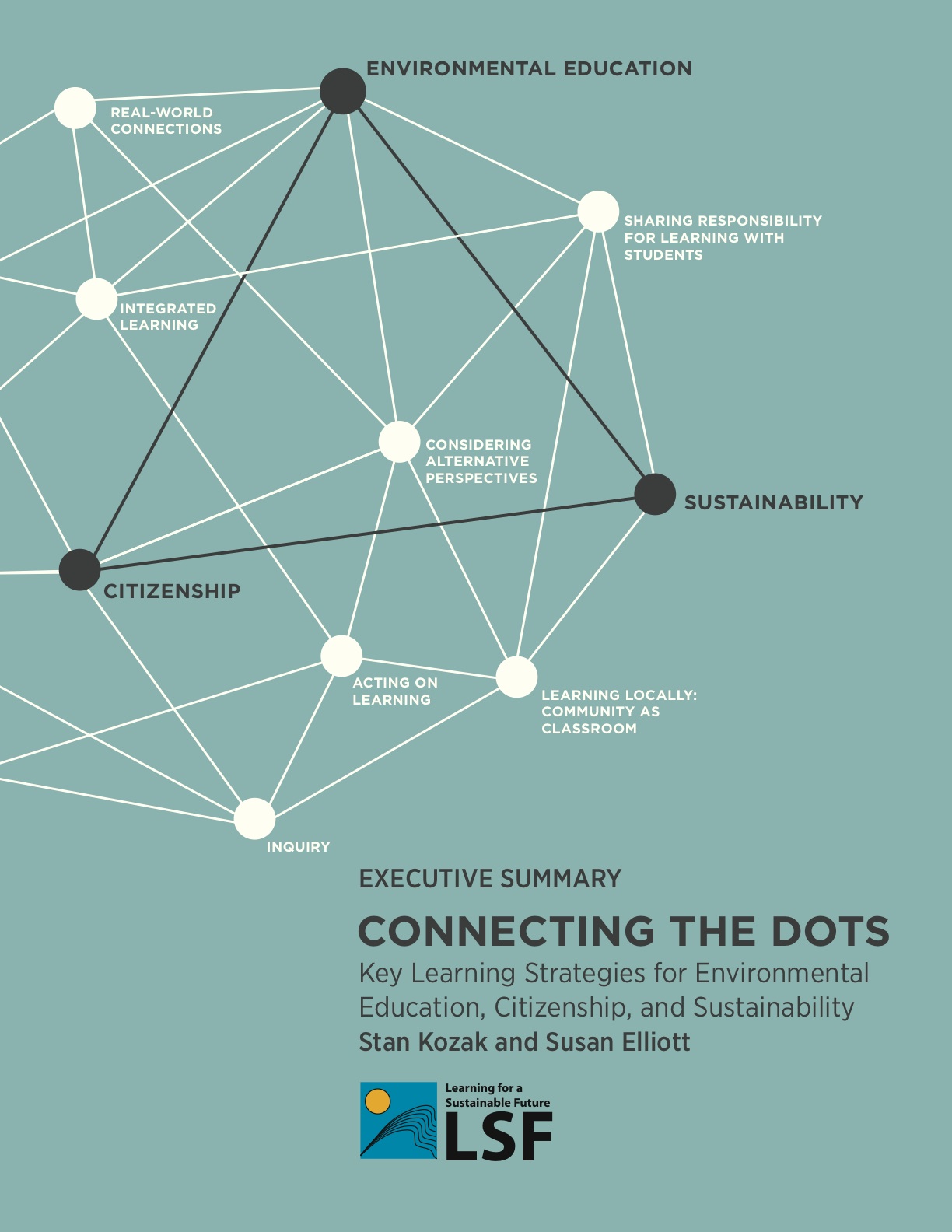

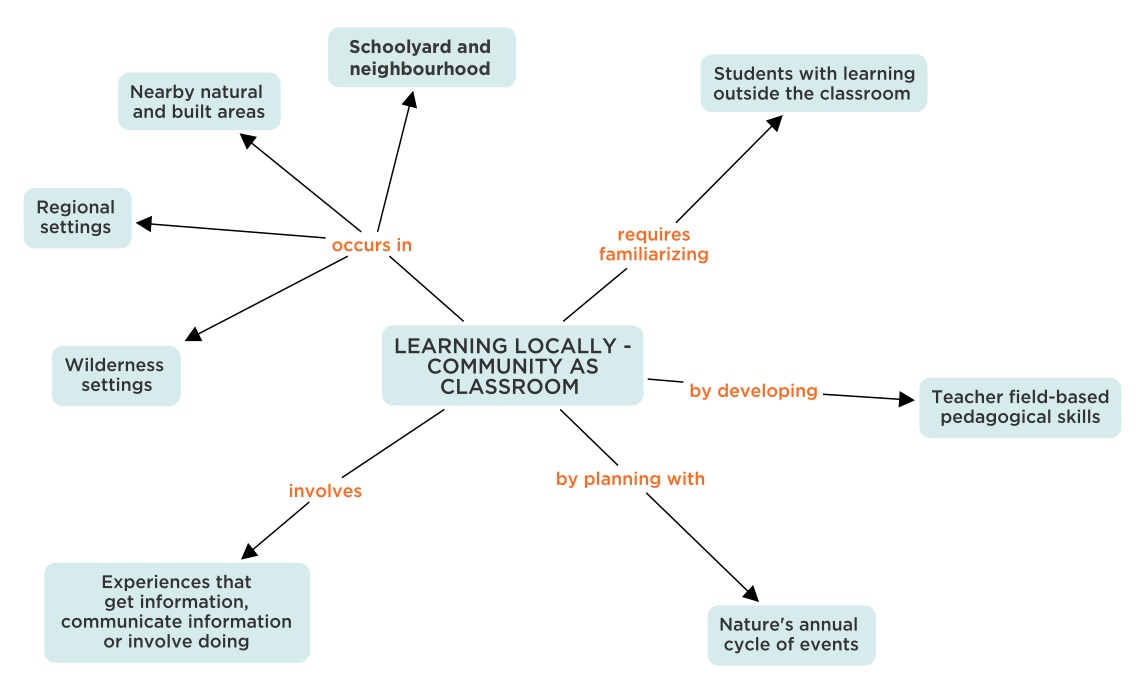

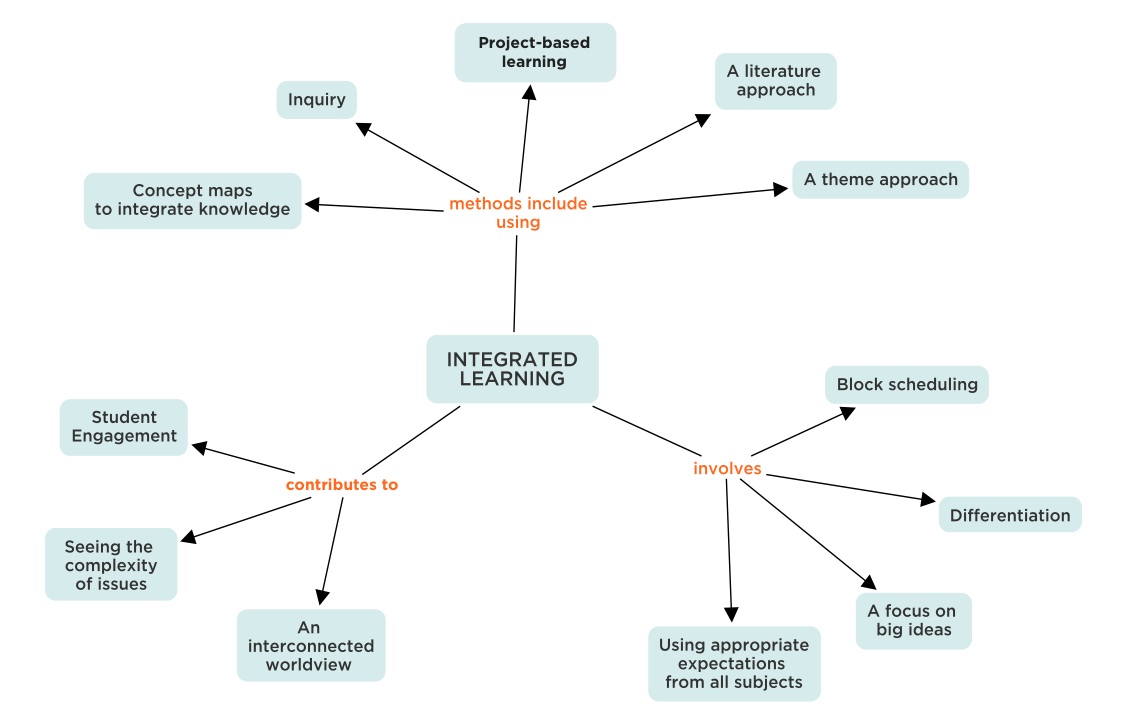

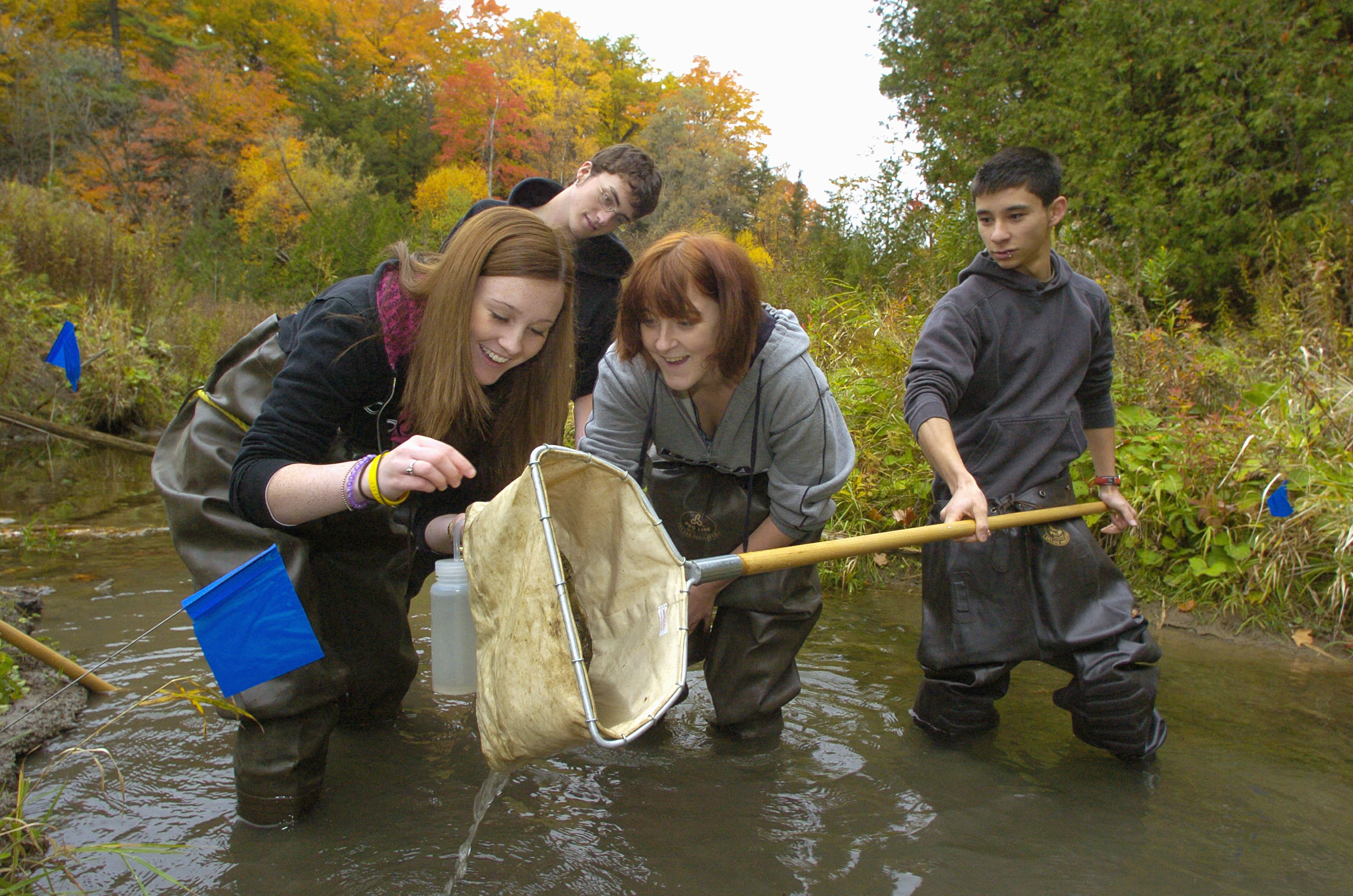

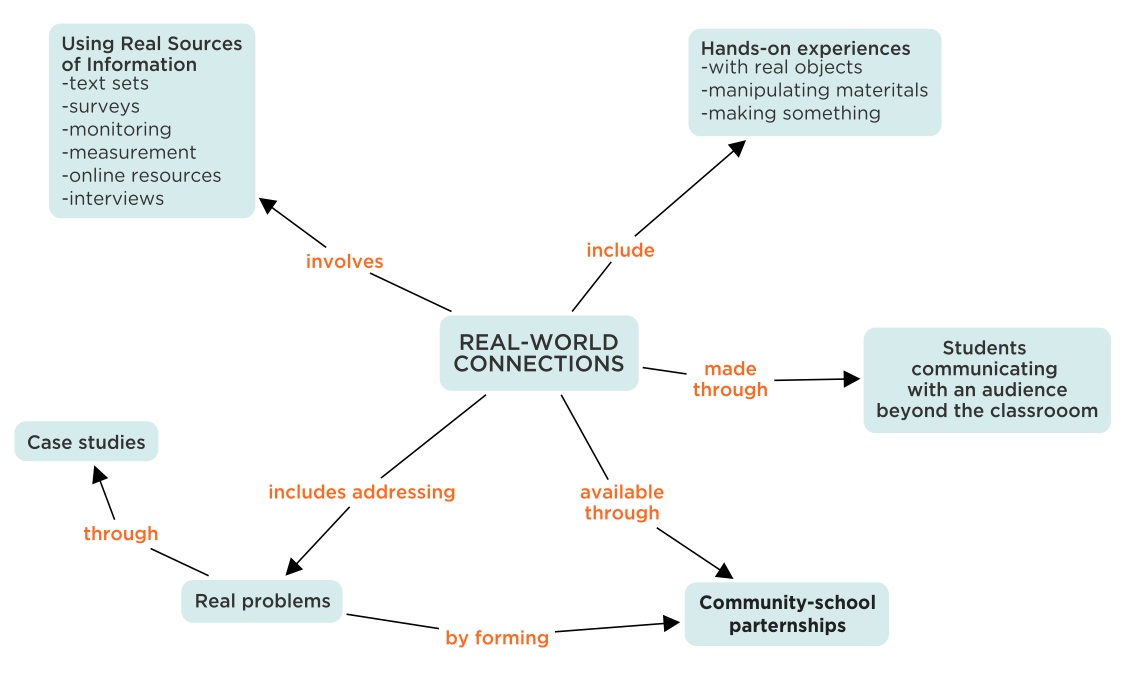

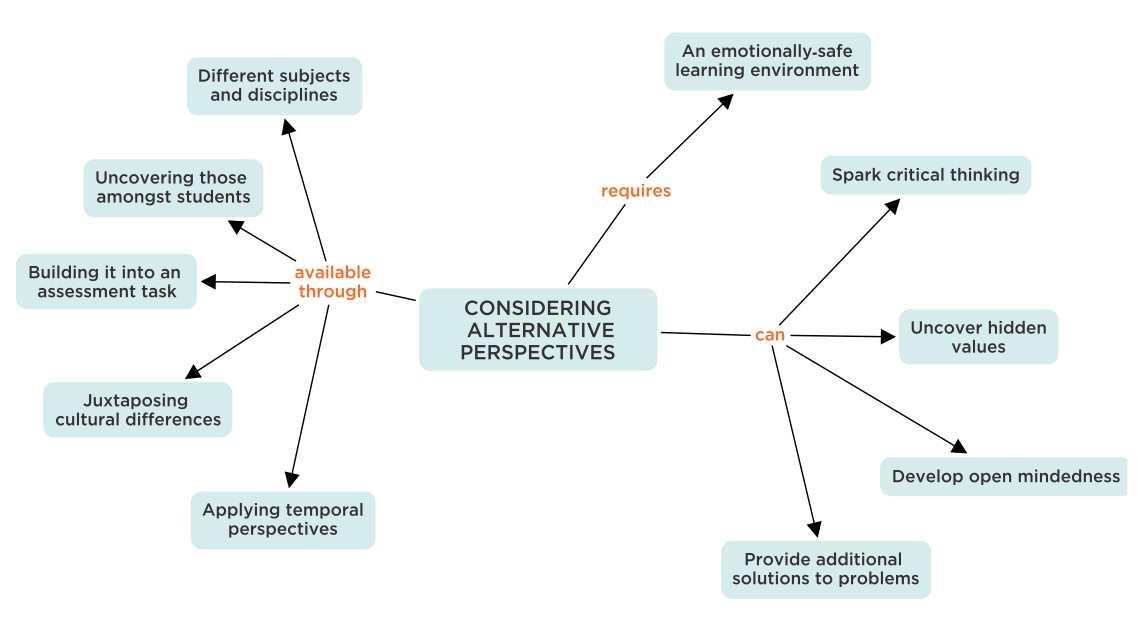

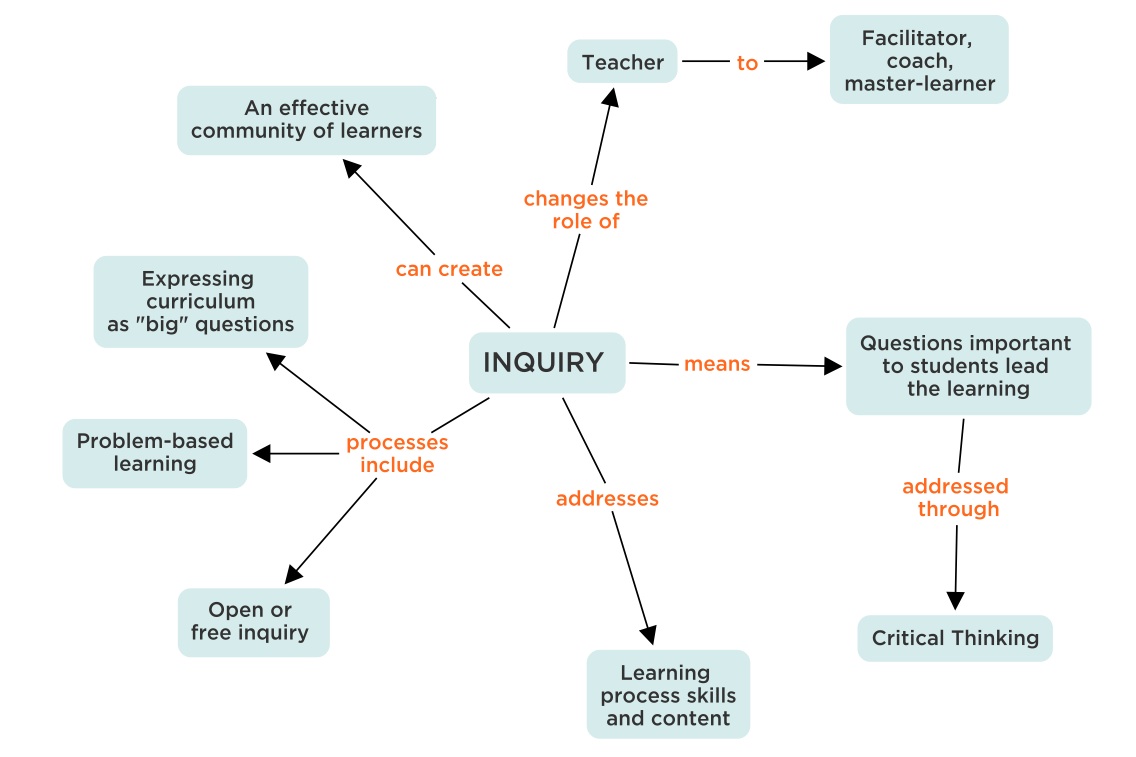

 At a basic level, all organisms—including humans—need food, water, space, and conditions that support dynamic equilibrium to survive. By recognizing the common needs we share with all organisms, we can begin to shift our perspective from a view of humans as separate and superior to a more authentic view of humans as members of the natural world. From that perspective, we can expand our circles of empathy to consider the quality of life of other life forms, feel genuine concern about their well-being, and act on that concern.
At a basic level, all organisms—including humans—need food, water, space, and conditions that support dynamic equilibrium to survive. By recognizing the common needs we share with all organisms, we can begin to shift our perspective from a view of humans as separate and superior to a more authentic view of humans as members of the natural world. From that perspective, we can expand our circles of empathy to consider the quality of life of other life forms, feel genuine concern about their well-being, and act on that concern. Organisms do not survive in isolation. Instead, the web of relationships within any living community determines its collective ability to survive and thrive.
Organisms do not survive in isolation. Instead, the web of relationships within any living community determines its collective ability to survive and thrive.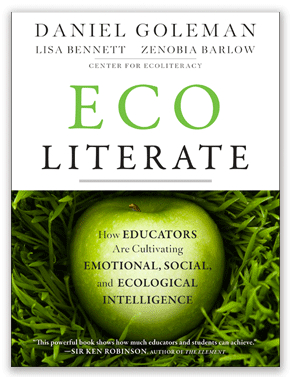 Ecoliterate people recognize that nature has sustained life for eons; as a result, they have turned to nature as their teacher and learned several crucial tenets. Three of those tenets are particularly imperative to ecoliterate living.
Ecoliterate people recognize that nature has sustained life for eons; as a result, they have turned to nature as their teacher and learned several crucial tenets. Three of those tenets are particularly imperative to ecoliterate living.
 Thich Nhat Hanh describes mindfulness is being at the heart of awakening, of enlightenment, and is achieved through the practice of breathing and meditation
Thich Nhat Hanh describes mindfulness is being at the heart of awakening, of enlightenment, and is achieved through the practice of breathing and meditation "People at Google aspire to do world-changing things - so wisdom and mindfulness provide some strategies and tools that equip us."
"People at Google aspire to do world-changing things - so wisdom and mindfulness provide some strategies and tools that equip us." Yvon Chouinard, the founder of Patagonia, says there is a “proper size” for the company. "There are no three star French restaurants with fifty tables – it’s impossible"
Yvon Chouinard, the founder of Patagonia, says there is a “proper size” for the company. "There are no three star French restaurants with fifty tables – it’s impossible"